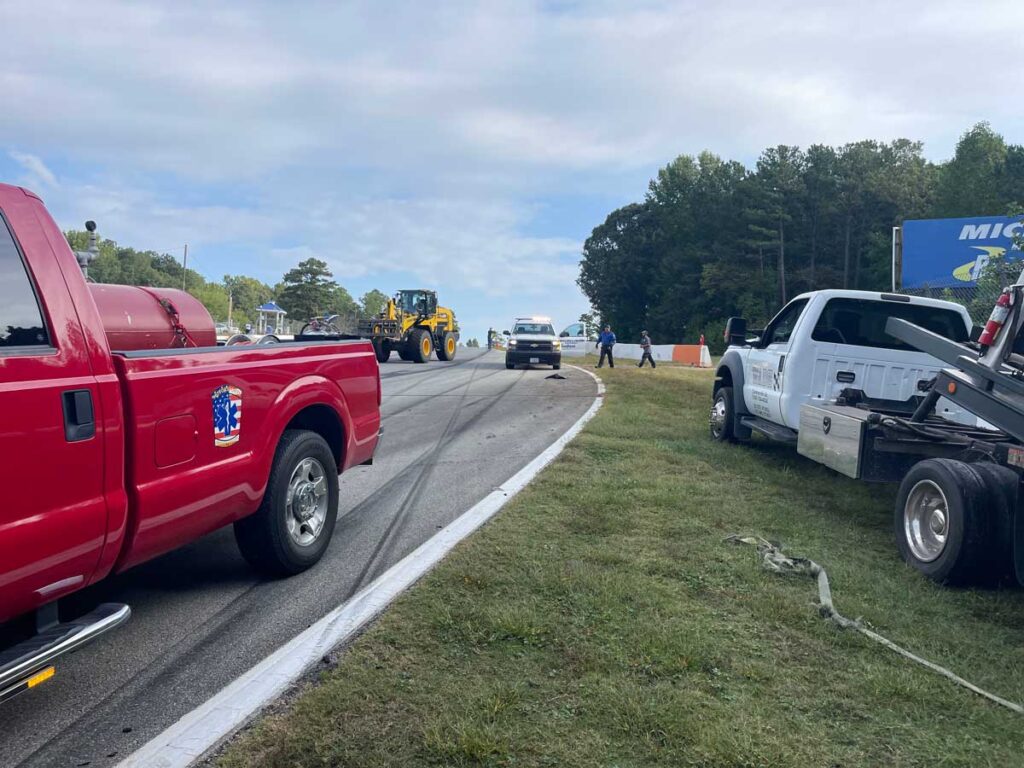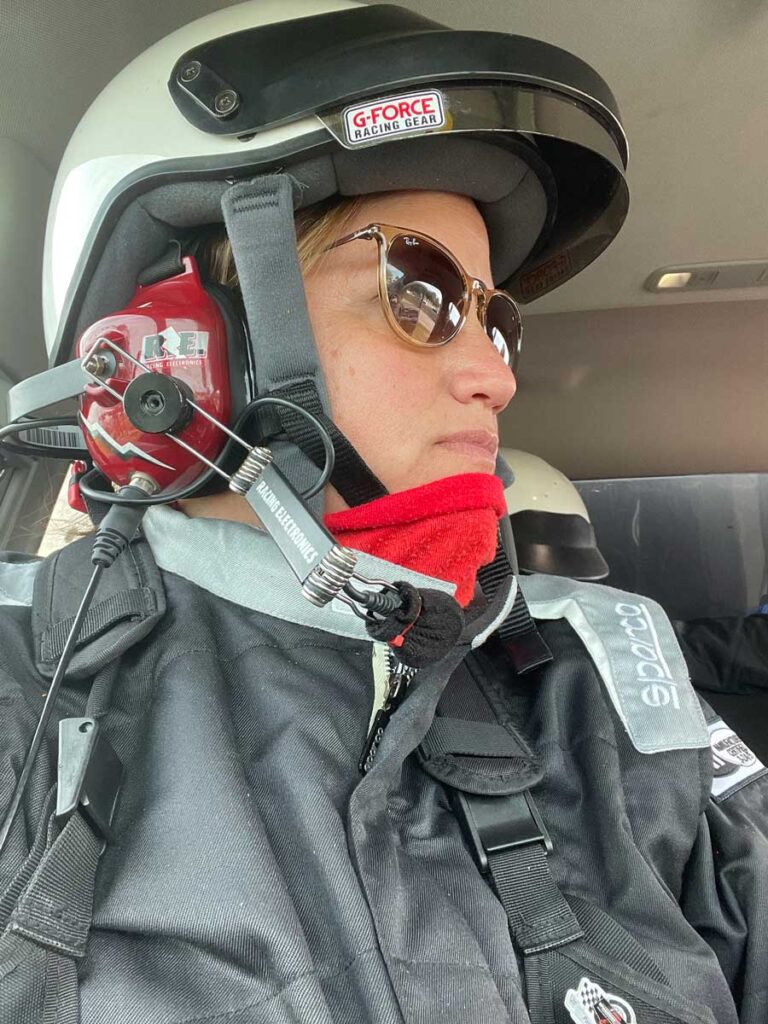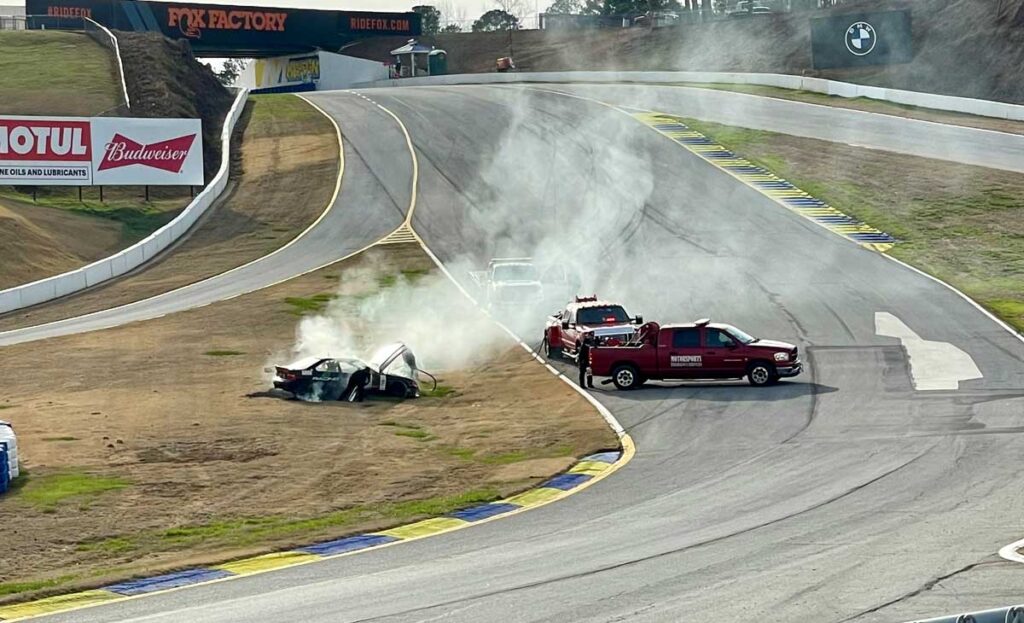Given the prevalence of motorsports venues across the United States, it’s unsurprising that many firefighters are involved in motorsports racing. Be it a drag strip, dirt oval, road course, or paved oval, firefighters are often onsite, working to improve the safety of racers. Although this represents a small fraction of the fire service, these firefighters play a critical role in safeguarding racers. Over the years, advances in driver safety have been significant, with improvements to roll cages, car design, helmets, and race suits. However, the question arises: have motorsports firefighters also advanced their preparedness and response?
- The Need for Respiratory Protection When Responding to a Motorsports Incident
- ES Perspective of a Rally Car
Many of us have seen footage of track incidents where a firefighter arrives on scene via a four-wheeler, carrying a small extinguisher and wearing inadequate gear like jeans and a cutoff T-shirt. The justification for such practices is often, “This is how it’s always been done,” or, “Serious incidents rarely happen here.” While these points may hold some truth, they do not eliminate the need for proper equipment and preparedness. When an unplanned racing incident occurs, the driver’s well-being could depend on the firefighter’s readiness. There are several ways we can better prepare and not become the topic of discussion from an Internet video.
In 2003, the NFPA 610 Guide for Emergency and Safety Operations at Motorsports Venues was introduced, offering guidelines for appropriate personal protective equipment (PPE). The guideline has relevant standards and suggestions for PPE, such as flame-retardant clothing, flame- and cut-resistant gloves, eye protection, and head protection. Safety gear can be expensive, but affordable options are available across different price ranges. At a minimum, following NFPA 610 recommendations is prudent for ensuring responder safety.



Beyond wearing suitable gear, several no-cost measures can enhance our effectiveness:
- Know your track: Each track has specific areas where incidents are more likely to occur. Familiarize yourself with these zones and develop preplans for potential incidents. Although not every scenario can be anticipated, having a higher level of familiarity allows for more confident and effective responses and getting the track race-ready faster—a benefit appreciated by track management, drivers, and fans alike.
- Know your drivers: If you regularly work at a racetrack or travel with a series, take the time to educate yourself on the drivers. This knowledge can help you quickly assess if a driver behaves unusually after an accident, enabling earlier treatment and potentially better outcomes. Additionally, if you are medically trained, knowledge of any preexisting medical conditions drivers may have can be beneficial for postincident care.
- Know your cars: Race cars are notoriously difficult to remove drivers from due to driver positioning, specialized seats, and other unique features. Familiarize yourself with their construction, including locating and operating cutoff switches, removing steering wheels, and working with various belt systems. Your expertise will be invaluable in the event of an accident requiring extrication, especially if external emergency services are called in.
- Carry essential equipment: While it’s not feasible to carry every piece of equipment you could ever need, you should have enough equipment to sustain your efforts until more resources arrive. Carrying two extinguishers instead of just one will double your extinguishment capability. It may also be a good idea to carry some oil-absorbing powder and a few basic hand tools.
- Train regularly: Continuous training is vital. Involve all track personnel, including tractor operators, cleanup crews, and recovery teams. The off-season is an excellent time to practice handling less-common incidents such as rollovers, possibly with the assistance of local salvage yards. A donated car may not behave exactly like a race car, but you will understand how to roll a vehicle back to an upright position safely and in a controlled manner. You may have to perform this maneuver if you cannot remove a driver from an overturned car.
- Engage with track management: Discuss your challenges as an emergency responder with track management. They may not fully understand the difficulties of on-track incidents and could make necessary changes if informed.
Although safety should never be compromised for cost, many improvements can be made within a budget, often requiring only an investment of your time. Any progress in safety is beneficial. Ultimately, track safety personnel are the most visible representatives of the track, frequently seen by fans and drivers during events. It is crucial to uphold the standards of the sport, the firefighting profession, and the track itself. Your work and contributions to the sport are important, do not go unnoticed, and are appreciated.
Rob Nowakowski has worked with the Barrow County (GA) Fire Department for 27 years, spending the last 11 years as a battalion chief. He holds degrees in fire science technology and emergency management. He also serves as a track services coordinator with an international racing series and has worked as a crew chief with Motorsports Emergency Services at Michelin Raceway Road Atlanta for more than 20 years. He can be reached at r.nowakowski1216@gmail.com.

